Marrakesh has a really African atmoshpere. At the airport's exit, there are palm trees. The main square, the Jemaa el Fna is the largest market square in North Africa. Anywhere, you go from the main square, you will found yourself in the bazaar. In the bazaar, you can bargain for everything, except food. They accept Euros, at the exchange rate 1 euro = 10 Moroccan Dirham, but in an exchange, you get a little better rate. If you were there, taste the mango, it's very delicious, they bring it from Senegal. The bananas are very little, I recommend them also. Itself the main square is a real sight, the most spectecular at night: at the center gwanaa musicians play drums; towards the edge of the square, juice seller's stands are lined up, you can taste there even the freshly squeezed dragon fruit juice, but you can buy a mix also. When you buy a juice, you get a tasting for free.
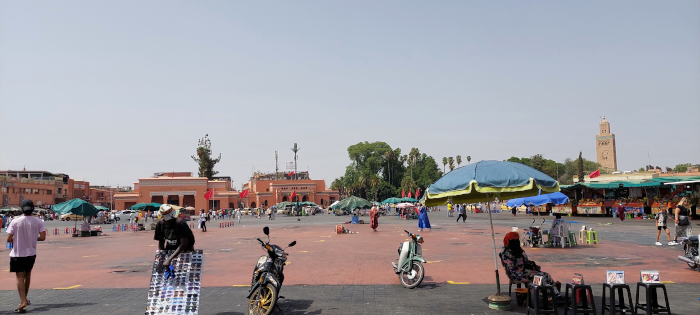
The Jemaa el fna square
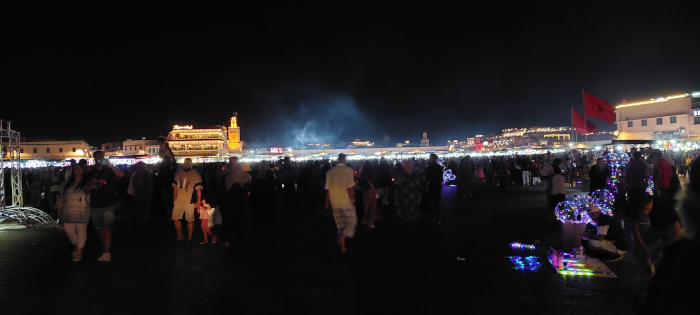
The main square at evening - there is much hustle and bustle
The Majorelle garden is a little further from the city center, from the Medina, here it's worth to go by taxi. The wonderful plants placing at nice environment is this blue color, a shade of blue called Majorelle blue - that color is by Jacques Majorelle painter, he founded the garden. After him, Yves Saint Laurent fashion designer was the owner. Nowadays the garden is a museum. Off the walking trails, provides home to Berber Museum also, where you can get to know the Berber's culture, you can see Berber clothing, and ancient utility items.
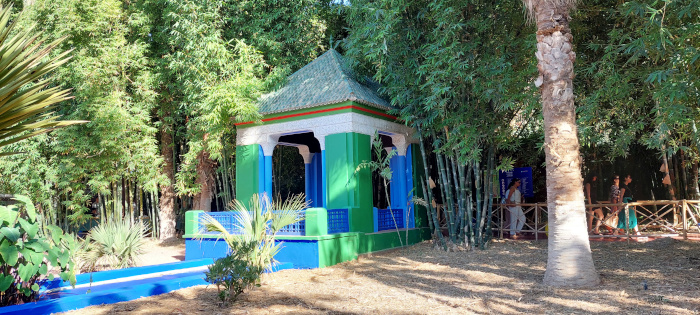
The Majorelle garden
The Bahia palace is reachable by foot from the medina, from the main square, the route leads through a bazaar row. The palace has a very nice architecture. It has a garden, where you can see banana trees. From the main hall opens the hammam, which is the bath part of the palace, objects are also exhibited.

The Bahia palace
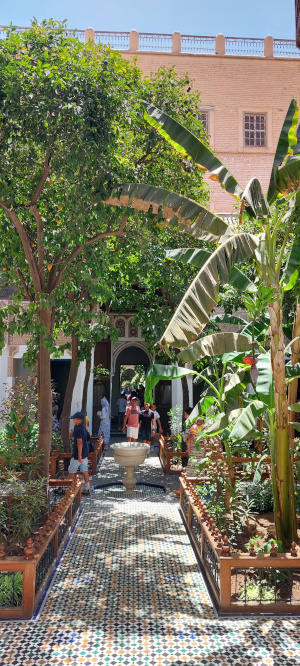
The Bahia palace's interior garden
In the Dar si Said Museum you can see carpets. The museum is reachable by foot from the old town. They show a film about the history of making carpets - the film is from the French colonial times. In the next rooms, there are carpets: there is, which has animals woven on it, for example a gazelle. But on most of them there are geometrical shapes. The museum has a garden, with pavilion and banana trees, the pavilion is made special by a little fountain.
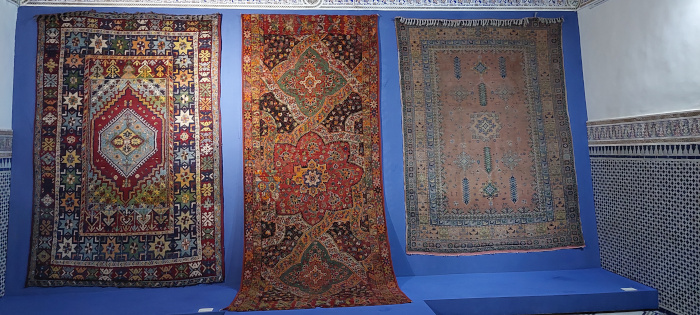
Carpets in the Dar si Said Museum
The Ben Youseff Medersa is an old Quaraan school, so the medieval European university's Arabic equivalent, now a museum. For there, it's also worth walking. The building is a master work of Moorish architecture. You can go to the student's room, from where there is a spectecular view to the main hall. Walkable in short time.
The Ben Youseff Medersa's main hall